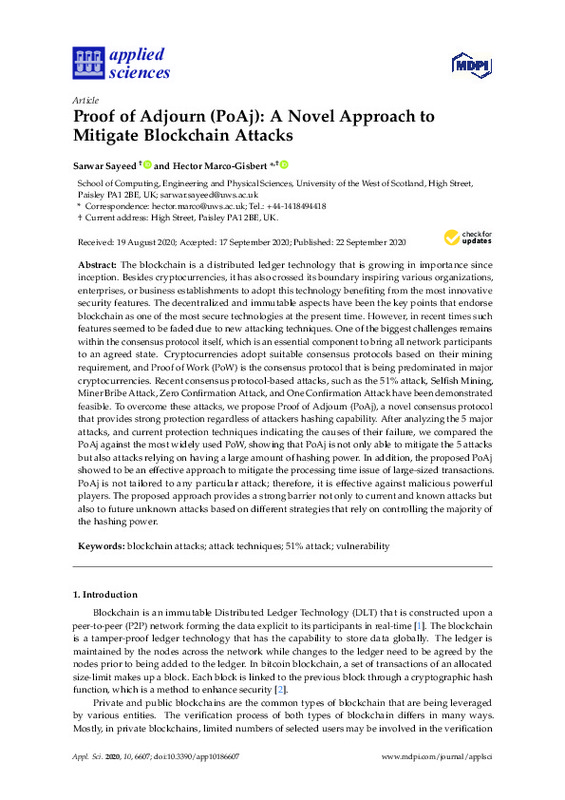JavaScript is disabled for your browser. Some features of this site may not work without it.
Buscar en RiuNet
Listar
Mi cuenta
Estadísticas
Ayuda RiuNet
Admin. UPV
Proof of Adjourn (PoAj): A Novel Approach to Mitigate Blockchain Attacks.
Mostrar el registro completo del ítem
Sayeed, S.; Marco-Gisbert, H. (2020). Proof of Adjourn (PoAj): A Novel Approach to Mitigate Blockchain Attacks. Applied Sciences. 10(18):1-23. https://doi.org/10.3390/app10186607
Por favor, use este identificador para citar o enlazar este ítem: http://hdl.handle.net/10251/176998
Ficheros en el ítem
Metadatos del ítem
| Título: | Proof of Adjourn (PoAj): A Novel Approach to Mitigate Blockchain Attacks. | |
| Autor: | Sayeed, Sarwar | |
| Entidad UPV: |
|
|
| Fecha difusión: |
|
|
| Resumen: |
[EN] The blockchain is a distributed ledger technology that is growing in importance since inception. Besides cryptocurrencies, it has also crossed its boundary inspiring various organizations, enterprises, or business ...[+]
|
|
| Palabras clave: |
|
|
| Derechos de uso: | Reconocimiento (by) | |
| Fuente: |
|
|
| DOI: |
|
|
| Editorial: |
|
|
| Versión del editor: | https://doi.org/10.3390/app10186607 | |
| Tipo: |
|









